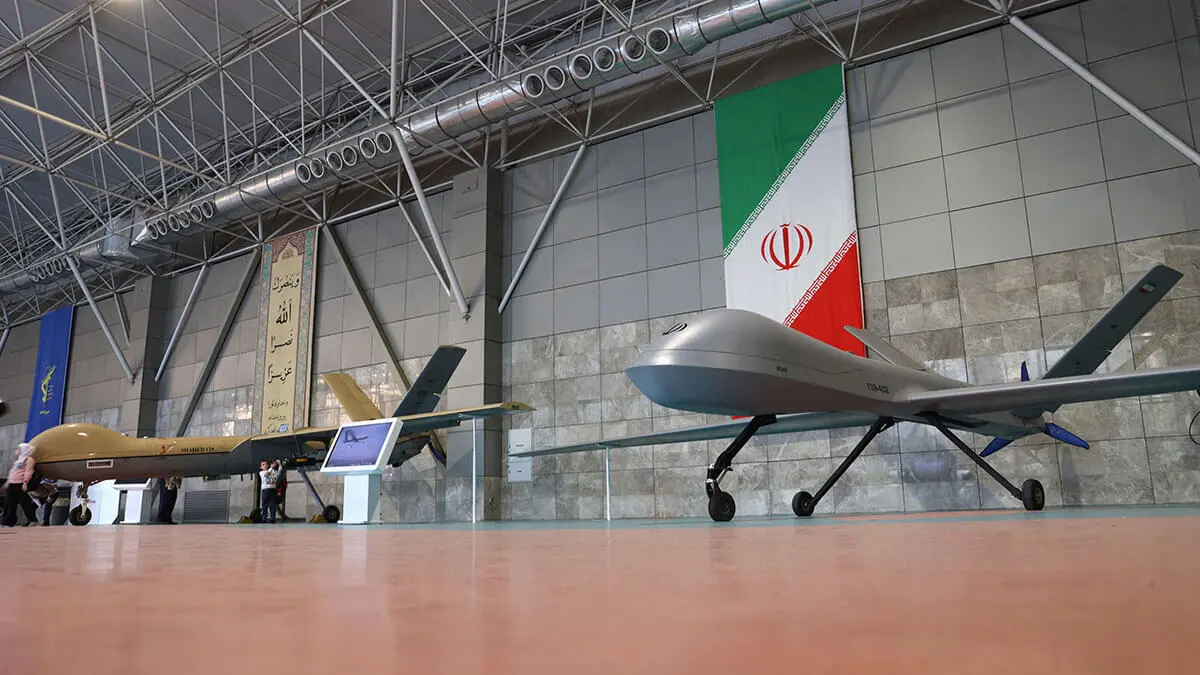A laboratory for testing drones and missiles over the Red Sea and Bab al-Mandab

The current internal dispute within the US federal government over subsidies and funding for major universities, mainly for scientific research, has exposed the extent of US spending on scientific research in the country, placing the United States at the top of an invisible list that makes it a key power. It is true that the disputes are fundamentally political and related to what is happening in the world, and are disguised as scientific controversy, moral controversy, anti-Semitism or Islamophobia. However, numbers are just numbers, and they hide truths of superiority.
We are not talking about small levels of spending, those aimed at introducing cosmetic improvements to attract smaller competitors, but about profound changes that take US products to higher levels and to broader and more comprehensive terms.
The numbers are confusing and misleading even when they express direct readings or relative terms. What we want is something that reflects the nature of life and what a particular economic sector can boast about.
Is it a significant amount to borrow $2 billion from the IMF for Tunisia? In relative terms, the amount is large, considering the size of Tunisia's annual budget, for example. But the amount will be a small figure in absolute terms. This is the problem with the relationship between the so-called North and South countries. Or to be more precise, it is a comparison table between our billion and their billion, or between our dollar and their dollar.
These comparison tables will become increasingly varied and complex as we try to read more the more we add up what a billion dollars can buy in today's world. What is cheap and what is expensive?
The first peak of complexity we will encounter when dealing with technology. The world trembles at stock market fluctuations every time there is mention of a change regarding the entry or departure of a scientist or actor in artificial intelligence, whether in the form of software, processors and chips, or even a few lines that a developer adds to the whole concept.
The second peak definitely comes from weapons. Just when the world was preparing to accept drones as a means of disrupting the media, for example, with politicians and the like, the issue takes on a dangerous dimension with the emergence of suicide drones or explosive drones. You release a large number of drones armed with small bombs, cameras and artificial intelligence that go after the target and kill or disable it. In this case, you have the possibility of increasing or decreasing the number to attack targets from close range or from afar. These are new concepts in the language of war that surpass all the observation methods that humanity has produced to date and that will clearly remain with us in the foreseeable future. Some of them are mines that have been revealed and others have not. We do not know how many pagers are sleeping like mines or how many are walkie-talkies. These are suicidal flies that we have voluntarily placed in our pockets or belts for years or months, and they will wait years and months until they receive the order to execute themselves. At first, these weapons may annoy Iran, but because of their speed and ease of production, they can quickly become a weapon in their hands.
The Middle East is a theatre of operations for these weapons. We will see a lot of criticism. But, as we have seen, the most damaging attacks come from Israel, and in Iran's hands they become a ‘commodity’ in large quantities. This is what makes things dangerous, because the Iranians are making it cheap, accessible and popular.
In such an environment, politics in the region unfold without known constraints or established central authority. The gravity of what Hamas leader Yahya Sinwar did cannot be underestimated. He has discarded the concepts of the previous war and replaced them with new rules that are difficult to understand. Every time a military commander discovered that he could use a different form of this weapon, or a politician decided to switch from one method to another in using the weapon, the other side would in turn prepare with a fundamental or new weapon, or respond in a way that would ultimately nullify the effect of the attack.
At the heart of all this may lie the ability to invest scientifically, the flexibility to make decisions and the speed of their implementation on the ground, or the precision of their implementation on the battlefield. It can be seen that Iran's hypersonic missiles, for example, may have their origins in laboratories that recalibrated their sensors with data recovered from the ‘battlefield,’ over the Red Sea or in the skies over Ben Gurion Airport, during the final moments of manoeuvring before attacking targets. This allowed Iranian engineers to make them more flexible and capable of evading anti-aircraft missiles. This is the perfect embodiment of the logic of saving money for scientific research in order to achieve major advances.
To what extent can Iran match the United States' ability to spend on this research? Iran is certainly not alone in this. It is naive to say that the Houthis are collecting data and providing it to the Iranians so that they can transform the Red Sea battlefield and the Negev desert into the largest laboratory for the conflict between the United States, the West and Iran. You can easily see and record Russians, North Koreans and countless other partners and companies who want to learn from these open-air experiences. When we say open-air, we actually see how things are done visually, but unfortunately we do not record them as digital signals that can be analysed by us and others. This giant laboratory is something that has never been done before.
Images of night-time missile strikes are interspersed with hysterical screams and religious chants, but they do not hide the fact that amazing changes are taking place around us and that we need to stop and learn from them and ask: What kind of revolution are we witnessing before our eyes? It is necessary to be calm, even tactful, when looking at it, so as not to get lost in the glare, as the Qaher and Al-Zafer missile revolution was lost, for example. During that period, in the late 1950s and early 1960s, the world was searching for survivors and infiltrators of German space scientists among the remnants of the Nazis. The elite went to the United States and participated in the American space missile project, and another elite, whether for ideological reasons or because they were captured and taken with their laboratories to the former Soviet Union, participated in the creation of the myth of the Soviet conquest of space, or of the giant missile complexes that could reach anywhere in the world (i.e., the West) and attack it with nuclear bombs, or smaller missions such as Scud missiles. A large number of other workers remained waiting for their fate in the arms market, which ended with the end of the war. Some of those who worked in Hitler's missile factories were from Egypt, and the country benefited from them by creating its own legend about the Qaher and Al-Zafer missiles, and they participated in parades. Then the project withered and died.
The world is now full of drones, missiles, manufacturing workshops and testing laboratories. Technology has helped reduce the number of factories, eventually eliminating them and turning them into workshops, which in turn can become ‘flies’ that scatter across unimaginable areas. The ‘fly workshop’ produces a ‘fly march’ and kills a soldier trying to hit it with a fly swatter carried by our ancestors. Or a medium-sized workshop that produces a manoeuvrable missile that launches ninja knives instead of explosives, or a giant network of laboratories and labs that gathers and re-standardises information to arrive at a manoeuvrable hypersonic missile that has just left the hands of the most prominent scientists in this field, either through manufacturing or modification to hunt down its target efficiently, combining the energies of important minds capable of innovation. It is difficult to see a quick, or even stable, end to the story given the speed of the changes brought about by Operation Protective Edge.
Many will be proud of their achievements against the Western ‘enemy.’ No one disputes that a lot of money and effort will be spent, and no one will say that the faithful who persevere in their love and dedication to the Palestinian cause, for example, will find in this round an opportunity to settle scores, and that many opportunists will find greater opportunities to outbid others. As for how things will turn out and what direction they will take, it is difficult to judge in advance because the abundance of money, the scope of the Western concept of what the West means outside the framework of arms, and the ability to impose political decisions are things that must be understood before entering into a bidding war. Our gigantic laboratory, stretching from Bab al-Mandab to the Suez Canal, is brimming with data, and we will see what conclusions each ‘conqueror’ and each ‘victor’ can draw from it.


